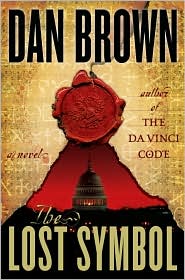
This much awaited to Angels & Demons and The Da Vinci Code is just as popular as its predecessors. Symbologist art historian Robert is drawn into another mystery tied to possible conspiracy theories surrounding a secret organization. Rather than the Knights Templar or the Illuminati, the Freemasons are crucial to this plot.
As a result of the focus, it might not be surprising that the tale is set in the United States rather than locations in Europe. In fact, most of the novel is set in Washington, DC. Langdon has come to the city on the invitation of his good friend Peter Solomon to fill in for a speaker who dropped out of his commitment at the last minute. Langdon is more than happy to step up for his friend. When he arrives at the Capitol, and rushes in to the designated room to find that it is empty ... well, empty of people anyway.
In the center of the rotunda is the severed hand of his friend, which has been tattooed with a number of images that are important to the Freemasons and the ring of a master Mason of the 33rd level on one of the fingers. The hand was pointing to the ceiling, where their is a picture of George Washington being ascending to heaven, surrounded by the Roman gods endowing gifts upon the important minds of early America.
Langdon receives a call from the mysterious Mal'akh who claims to have taken Peter, and demands that Langdon help him find a secret pyramid built by the Masons and hidden in Washington. Mal'akh, a tattooed extremist who has spent years hunting down the Ancient Knowledge and sacrificing all, wants the power so he can rule the world.
Langdon is quickly becoming the James Bond of Academia. In each new novel, he has a new female sidekick. This time it is Kathleen Solomon, the younger sister of Peter and a well-resepected scientist. The two find themselves hunting throughout Washington for the hidden clues they hop will allow them to find the pyramid and free Peter before his killed. Mal'akh has set a time limit on Peter's life. He must receive the information he wants before midnight, just a few hours later, or Peter will die.
I liked this one, but I have to say, the earlier books were more enjoyable for me. For one, it seems the publisher let Brown run a bit free. As a result, the first third of the book drags on a bit before the race really begins. This means the book drags a bit in the early pages.
Brown's books are great at embedding all sorts of historical lore and detail in his works, and he does a masterful job of describing art and architecture. He does not fail in that area in this volume, either. The rich detail makes the reader really image what is being described.
I do have to say, the biggest disappointment is that I was able to sort out the two big mysteries of the book very early on, which may be what made the book less impressive for me. One relates to identity, and uses a pretty common plot device from soap operas. The other is geographic, and Brown really overdoes things with the clues.
I am not sure I can say that the book lived up to the delay. The book was actually announced about two years ago, with a different title. The book kept getting pushed back, for one reason or another. I was glad to have read it, but it is not a must read even for fans (like myself) of Brown.


